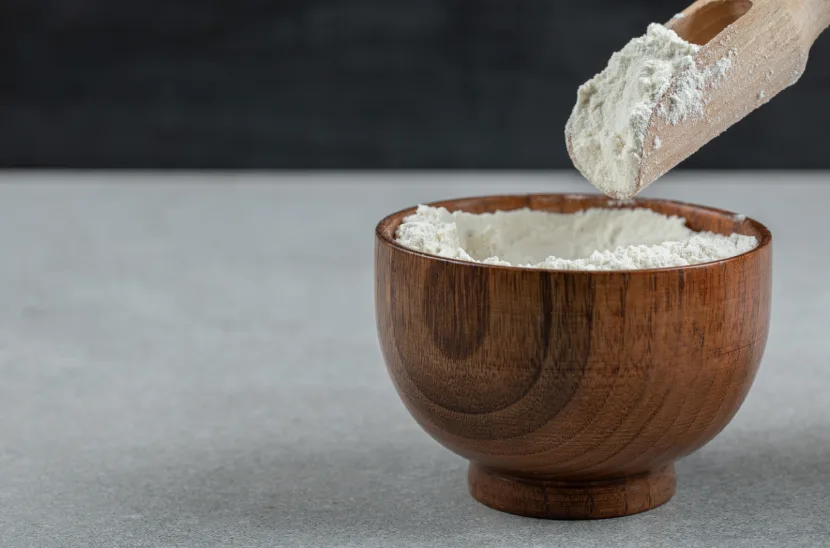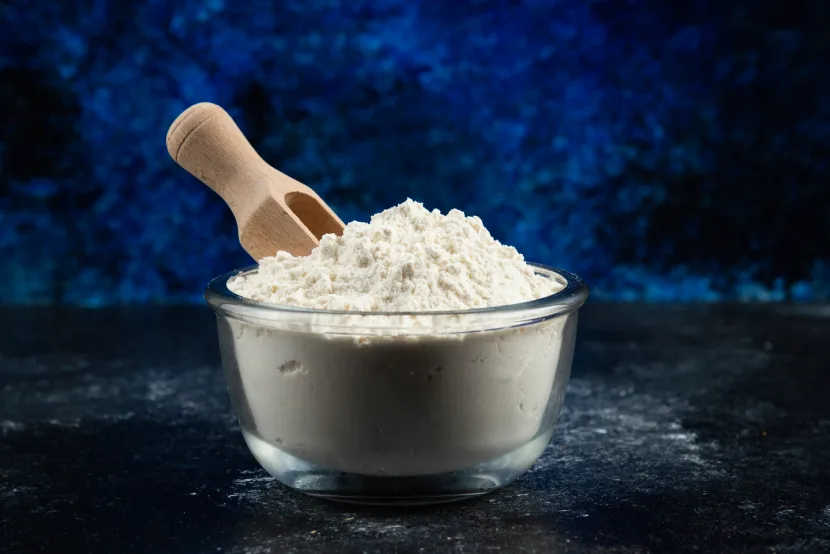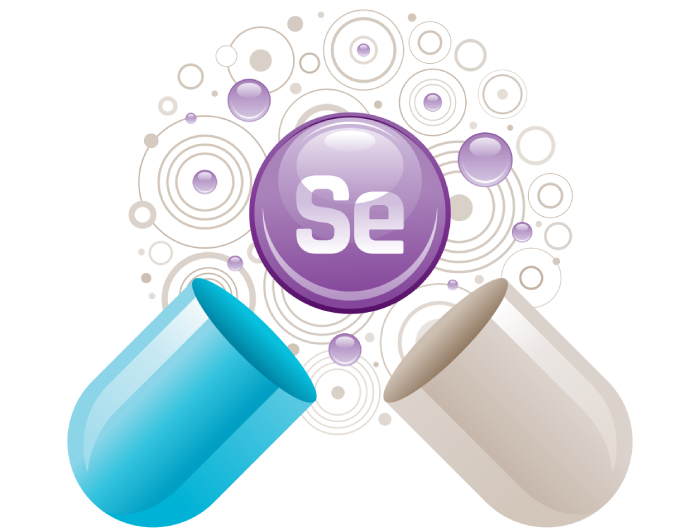As a widely used food additive and supplement ingredient, understanding maltodextrin side effects has become increasingly important for health-conscious consumers. This comprehensive guide will explore everything you need to know about this versatile but sometimes controversial ingredient.
What is Maltodextrin: Basic Information and Sources
Maltodextrin is a white, starchy powder produced through the partial hydrolysis of various plant-based starches. While it’s classified as a food additive, its presence in numerous products makes it essential to understand potential maltodextrin side effects before consumption.
Natural vs. Synthetic Sources
The primary sources of maltodextrin include corn, rice, potato, and tapioca. Tapioca maltodextrin, derived from cassava root, has gained popularity as an alternative to corn-based variants. When comparing the difference between maltodextrin and tapioca maltodextrin, the main distinction lies in their source material rather than their final chemical structure. Organic maltodextrin and organic tapioca maltodextrin options are also available for those seeking more natural alternatives.
Manufacturing Process
The production process involves breaking down complex carbohydrates using enzymes and/or acids, followed by purification and drying. This process results in a substance that can range from mildly sweet to nearly flavorless, making it versatile for various applications.
Common Commercial Uses
You’ll find maltodextrin in countless products, from processed foods to supplements. Is maltodextrin included in ingredients labels? Yes, FDA regulations require its listing, though its source might not be specified.

Chemical Structure and Properties
Comparing Different Types
When examining maltodextrin vs dextrose or exploring dextrose vs maltodextrin comparisons, the key difference lies in their molecular complexity. While dextrin vs maltodextrin discussions often arise, maltodextrin has a more complex structure than both dextrose and dextrin.
Maltodextrin vs. Other Sweeteners
For those seeking alternatives, products like stevia without maltodextrin are becoming more common. However, it’s important to note that maltodextrin serves functions beyond sweetening, making direct substitution challenging in some applications.
Common Sources of Maltodextrin in Your Diet
Processed Foods
Maltodextrin appears in various processed foods, where it serves as a thickener, filler, or preservative. Understanding maltodextrin side effects becomes crucial when you realize how prevalent this ingredient is in the modern diet.
Supplements and Sports Nutrition
Maltodextrin in supplements is particularly common, especially in sports nutrition products. You’ll often find it in formulations containing capsule BCAA creatine L glutamine maltodextrin ZMA beta alanine combinations, where it serves as both a carrier and energy source.
Hidden Sources
Many consumers are surprised to learn about the numerous products containing maltodextrin. Is maltodextrin harmful? While generally recognized as safe (GRAS) by the FDA, some individuals may experience maltodextrin side effects, particularly those with specific health conditions or sensitivities.
Benefits and Applications
Understanding maltodextrin side effects requires a balanced view of both its advantages and potential drawbacks. Let’s explore its various applications and benefits before delving into concerns.
Sports Performance and Energy
In the athletic world, maltodextrin supplement usage is widespread due to its rapid absorption and energy-providing properties. When combined in formulations like capsule BCAA creatine glutamine maltodextrin ZMA beta alanine, it can support athletic performance and recovery. However, athletes should be aware of potential maltodextrin side effects during intense training.
Food Industry Uses
The food industry utilizes maltodextrin extensively as a thickener, filler, and preservative. Its neutral taste and versatility make it an ideal ingredient for various products, though consumers should be mindful of maltodextrin side effects when consuming processed foods regularly.
Pharmaceutical Applications
In pharmaceutical preparations, maltodextrin serves as a binding agent and carrier. Its role in medical applications extends to special diets and preparations, such as maltodextrin clear liquid diet formulations.
Primary Health Concerns and Side Effects
Digestive System Impact
One of the most commonly reported maltodextrin side effects involves digestive issues. While many people tolerate it well, some may experience:
- Bloating and gas
- Changes in gut bacteria composition
- Digestive discomfort, especially in sensitive individuals
Blood Sugar Management
The relationship between maltodextrin and diabetes is a significant concern. For those asking about maltodextrin pre diabetics considerations, it’s important to note that this ingredient can cause rapid blood sugar spikes. These maltodextrin side effects make it crucial for diabetics and pre-diabetics to monitor their intake carefully.
Long-term Health Considerations
When people ask “is maltodextrin bad for your liver?” or wonder about long-term effects, research suggests monitoring consumption is wise. While moderate intake is generally safe, excessive consumption may contribute to:
- Blood sugar regulation issues
- Changes in gut microbiota
- Potential inflammatory responses
Maltodextrin and Special Dietary Considerations
Gluten Sensitivity and Celiac Disease
A common concern among consumers is “does maltodextrin contain gluten?” or “is maltodextrin gluten free?” The good news is that maltodextrin gluten free options are widely available. Even when derived from wheat, the processing typically removes gluten proteins, making maltodextrin safe for most people following a maltodextrin gluten free diet. However, those with severe sensitivities should verify the source and processing methods.
Diabetes and Blood Sugar Control
For individuals managing diabetes, understanding maltodextrin side effects on blood sugar is crucial. The high glycemic index of maltodextrin means that those following a maltodextrin and diabetes management plan should exercise caution and possibly consider alternatives.
Keto Diet Compatibility
For those following a ketogenic diet, maltodextrin keto considerations are important. Due to its high glycemic index and carbohydrate content, maltodextrin may not be suitable for maintaining ketosis, and users should be aware of these maltodextrin side effects on their dietary goals.
Safety and Quality Standards
Understanding maltodextrin side effects goes hand in hand with knowing the quality standards and regulations governing its production and use.
FDA Regulations
The FDA classifies maltodextrin as Generally Recognized as Safe (GRAS). However, this classification doesn’t mean there are no maltodextrin side effects to consider. Manufacturers must follow strict guidelines for production and labeling, ensuring consumers can make informed decisions about products containing this ingredient.
Organic vs. Conventional Options
The market now offers both conventional and organic maltodextrin options. Organic maltodextrin must meet additional certification requirements, which may appeal to consumers concerned about maltodextrin side effects from conventional processing methods. Similarly, organic tapioca maltodextrin provides an alternative for those seeking more natural options.
Labeling Requirements
When asking “is maltodextrin included in ingredients label?” the answer is yes – manufacturers must list it. However, they aren’t required to specify the source, which can be important for those following specific dietary restrictions or concerned about particular maltodextrin side effects.
Different Types of Maltodextrin
Tapioca Maltodextrin
Tapioca maltodextrin has gained popularity as an alternative to corn-based versions. The difference between maltodextrin and tapioca maltodextrin primarily lies in their source material, though their functional properties remain similar. Some consumers report fewer maltodextrin side effects with tapioca-based versions.
Corn-based Maltodextrin
This is the most common type in commercial use. While perfectly safe for most people, some individuals may experience specific maltodextrin side effects related to corn sensitivity.
Other Variants
Various other sources can be used to produce maltodextrin, each with its own characteristics and potential maltodextrin side effects:
- Potato-based variants
- Rice-derived options
- Wheat-based versions (though maltodextrin is gluten free even when derived from wheat)
Maltodextrin in Sports Supplements
Pre-workout Formulations
Many pre-workout supplements contain maltodextrin as an energy source. When combined with other ingredients like BCAAs and creatine, it can enhance performance, though users should monitor for any maltodextrin side effects during exercise.
Post-workout Recovery
Recovery formulas often include maltodextrin to replenish glycogen stores. These products may combine capsule BCAA creatine glutamine maltodextrin ZMA beta alanine for comprehensive recovery support, though users should be aware of potential maltodextrin side effects.
Performance Enhancement
Athletes using maltodextrin for performance should understand both its benefits and potential drawbacks:
- Rapid energy availability
- Glycogen replenishment
- Possible digestive maltodextrin side effects during intense activity

Medical Uses and Considerations
Clear Liquid Diets
Maltodextrin clear liquid diet applications are common in medical settings. During periods when solid food isn’t permitted, such as before certain medical procedures, maltodextrin can provide necessary calories while minimizing maltodextrin side effects.
Colonoscopy Preparation
Understanding maltodextrin colonoscopy considerations is crucial for patients preparing for this procedure. While maltodextrin is often permitted during the clear liquid diet phase, patients should confirm this with their healthcare provider, considering potential maltodextrin side effects.
Clinical Applications
In clinical settings, maltodextrin plays several crucial therapeutic roles. As a nutritional support component, it provides easily digestible calories for patients who struggle with solid food intake or require supplemental nutrition. The compound’s molecular structure makes it an effective carrier in medication delivery systems, helping to improve the bioavailability and stability of various pharmaceutical compounds. Additionally, healthcare providers often incorporate maltodextrin into dietary supplement regimens for patients with specific medical conditions, particularly those requiring careful caloric intake monitoring or those with malabsorption issues.
Alternative Options
Natural Substitutes
When seeking alternatives to maltodextrin, several natural options can provide similar functional benefits. Complex carbohydrates derived from whole food sources, such as brown rice, quinoa, and sweet potatoes, offer sustained energy release while providing additional nutritional benefits including fiber, vitamins, and minerals. Natural thickening agents like guar gum or pectin can effectively replace maltodextrin’s texturizing properties in food products, though their behavior during processing may differ slightly. For those interested in sweetener alternatives, products formulated with stevia have become increasingly popular, offering a natural solution without the potential concerns associated with maltodextrin. However, it’s essential to carefully evaluate these alternatives based on your specific needs, considering factors such as digestibility, glycemic response, and potential allergic reactions.
Stevia-based Products
The growing popularity of stevia has led to more products combining or replacing maltodextrin with this natural sweetener. However, it’s important to note that stevia serves different functional purposes in food products.
Other Sweetener Options
When comparing maltodextrin vs dextrose or exploring other sweetener options, consider:
- Natural sugar alternatives
- Complex carbohydrate sources
- Fiber-based thickeners
FAQs
Common Consumer Questions
Q: Is maltodextrin gluten free?
A: Yes, even when derived from wheat, the processing removes gluten proteins, making it safe for most people with gluten sensitivities.
Q: Does maltodextrin have gluten?
A: No, the manufacturing process eliminates gluten proteins, making it suitable for a gluten free diet.
Q: Is maltodextrin bad for your liver?
A: Current research suggests that moderate consumption is safe for liver health, though excessive intake should be avoided.
Safety Concerns
Q: Is maltodextrin harmful?
A: When consumed in moderation as part of a balanced diet, it’s generally considered safe. However, individuals with specific health conditions should consult healthcare providers.
Q: Can I consume maltodextrin with diabetes?
A: Those with diabetes should monitor their intake carefully due to its high glycemic index. Consulting with a healthcare provider about maltodextrin and diabetes management is recommended.
Usage Guidelines
Q: How is maltodextrin used in supplements?
A: In supplements, it serves as:
- A carrier for other ingredients
- An energy source in sports nutrition
- A binding agent in capsules and tablets
Conclusion
Making Informed Choices
When deciding whether to consume products containing maltodextrin, consider:
- Your individual health status and sensitivities
- Specific dietary requirements (such as maltodextrin keto considerations)
- The role it plays in your overall diet
- Alternative options that might better suit your needs
Recommendations for Different Groups
Athletes and Active Individuals:
- Monitor how your body responds to maltodextrin in supplements
- Consider timing intake around workouts
- Pay attention to serving sizes and total daily intake
People with Dietary Restrictions:
- Verify product sources if following a maltodextrin gluten free diet
- Consider alternatives if on a ketogenic diet
- Read labels carefully for hidden sources
General Consumers:
- Be aware of maltodextrin in processed foods
- Make informed decisions based on your health goals
- Consider whole food alternatives when possible
Healthcare and dietary decisions should always be made with consideration of individual circumstances and, when necessary, in consultation with healthcare providers. While maltodextrin serves valuable functions in food production and specialized nutrition, being informed about its properties and effects allows for better decision-making about its place in your diet.
Remember that nutritional needs vary among individuals, and what works well for one person may not be optimal for another. Stay informed, listen to your body, and make choices that align with your health goals and dietary requirements.



